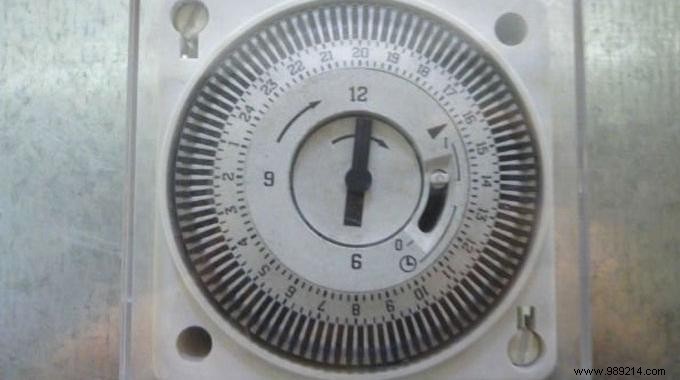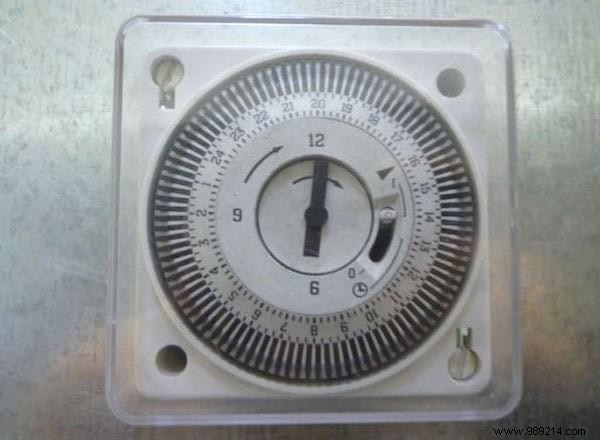
Ah, off-peak hours are a good idea to save money !
But we are not going to become night owls to take advantage of it.
It's a small device that will do the job for us.
I discovered the usefulness of the electrical programmer during a Christmas, a few years ago.
Make a tree and forget to light it, it's too noodle. Forgetting to turn it off before sleeping can be dangerous.

Recently, I had to buy a washing machine. My choice:first prize, so no programming. She's in a shed. I have to cross the garden to start it. When it's cold or rainy, I tend to be lazy! And then go out at 11:30 p.m. to start it... Too cheeky!
Never mind ! I still have my programmer below the elbow. Thanks to him, I can start my machine so that it runs at night. If possible very early in the morning. This way, it doesn't stay in the machine too long and avoids odors.
But with a kid who forgets to turn off the lights, I don't get far with just one timer. At the price it costs, it is given. So I'm going to buy it.
• For What Uses?
Light from aquariums, washing machines, dryers, coffee makers, lamps, heaters, any diode device, nightlights for children, Christmas lights, and even surveillance devices, or the TV if you systematically fall asleep in front of it!
• Choose your Programmer:there are 2 Types
- Battery operated digital :I automatically exclude it. First because I found it complicated to program, and when there are no more batteries, you have to start all over again. And then when we can avoid batteries, we do it. And to top it off, it's horribly more expensive
- Mechanical :2 to 3 times cheaper, obviously the best choice. It is made up of 96 "pins" around a sort of rotating ring. They correspond to the 15-minute periods that we have in 24 hours. They can be raised or lowered. There is a switch:"permanent on" position and "programming" position. Repetitive every day as long as nothing is changed... and there is no power cut. A small arrow points to the 24 hours which are graduated. You can program several time slots in a day, practical for lighting that suggests that there are people home!
Remember to connect it away from water splashes, so high up if possible and not on an extension cord that runs on the ground. No one is safe from a flood, for example. Also note that there are some specially for the exterior.
Only one fault, there is not always clear instructions. So follow the guide:
- Prepare your household appliance:fill the washing machine, the dryer, the coffee maker, etc...
- Lift all the pins of the programmer.
- Then, lower those that are for the entire duration that interests you (eg:11:30 p.m. to 7:30 a.m.).
- Put the small arrow in front of the current time.
- Check that the switch is on "permanent on".
- Connect your device to the programmer and everything to the power outlet.
- Put your device on "on".
- Activate the switch on "Programming". Respect this order carefully, because some devices have safeguards against power cuts, and might not start up otherwise. My HiFi system, for example, definitely does not want to work with it. So I can't use it as an alarm clock, too bad.
- Go about your business.
In your opinion, how quickly can 5 euros in electricity savings be made to amortize the price of a programmer? I await the answers in the comments.
Anything that helps reduce the electricity bill is good to take. The latest rate hikes go badly, let's be cunning.
With a scheduler, savings are not only made in connection with off-peak hours.
We can also consume less during peak hours, because we are airheaded, among other things. And that's not nothing.
If you could reduce your annual EDF bill by a quarter, I'm sure you wouldn't mind investing in a great friend who will do the job for you and only ask you 4 to 6 euros to last several years. .